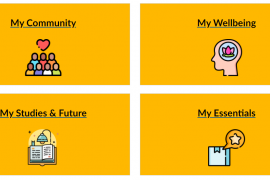Stanford University’s Tomorrow’s Professor blog series is a reproduction of a newsletter associated with the National Teaching & Learning Forum. A post which drew me in as a reader was one on flipped classrooms. I’ll let you read it yourself as it is short and worthwhile, but I wanted to share my experiences as a teacher and student along with a bit of optimism.
I’m a fairly recent Masters graduate having completed in 2012, after my undergraduate degree in 2007. The conversation about flipped classrooms has never made sense to me as it discusses the process of putting the onus of learning onto the student as a new phenomenon or as an alternative to current teaching practices. When I was a teacher in NSW public secondary schools I saw almost every teacher assigning homework and readings, organising group work, soliciting feedback in class, using project and team based learning, and all around I was deeply impressed by the diversity of active learning opportunities for students. What’s new in this flipped classroom discussion, I wonder?
All through my primary, secondary, and undergraduate education in the United States along with my Masters degree here in Australia, lessons have consisted of a chimeric mixture of teaching approaches ranging from direct-instruction lectures through to laboratories, tutorials, internships in workplaces, problem-based learning, practicals, and group activities. Forgive my ignorance if I am wrong, but isn’t some level of active student participation in learning with preparation prior to class essentially the definition of tutorial or laboratory based teaching methods? What is a tutorial lesson without active student participation? Universities and schools have been doing this for decades with the tutorial format deeply etched into the physical structure of our buildings, classrooms, and timetables.
Is it a new technique? Not really. Instructors have been assigning readings and asking questions in class for a long time. But the quality of work students can do and the ability to monitor students’ actual outside-of-class learning has been greatly enhanced through technology…
I studied biology durinh my undergraduate degree and because it a STEM subject we had laboratories and practical activities to undertake. We would not be allowed into the lab if we had not written up our experiments in our laboratory notebooks or answered our pre-lab questions. Nowadays we’d probably use an online quiz and LabArchives for some of these tasks. Further back into secondary school we always had homework, which formed both post-learning review and preparatory work for upcoming lessons. My teachers frequently asked questions to check for understanding and solicited feedback; often simply done through raising hands, sometimes with our eyes closed to overcome the embarrassment factor. A low tech solution.
I often wonder what people are arguing against with the flipped classroom model. I don’t know where the seemingly mythical stringent direct instruction only classrooms exist which have no readings, no textbooks, no tutorials, no formative learning or quizzes, no feedback, and no active components for their students besides taking exams. I wonder if we’re spun around underwater seeking the surface after having been disoriented by the latest wave of educational jargon crashing over us.
Certainly let’s continue to add the online recorded lecture and even more pre-work, readily disseminated through web-based technology, to the list of our already vast repertoire of active and self-directed learning options such as readings, formative quizzes, autonomous research activities, spontaneous student discussions amongst peers, formal group work, etc.
But who am I to argue if discussing active student learning, as though it were something new, makes our teaching better and provides more active learning opportunities for students? I could take a more positive and less cynical perspective by saying that good teaching, and talking about good teaching, is an evergreen discourse and a boon to our students’ learning experiences.




